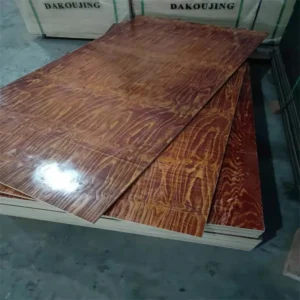Multilayer Plywood for sale
Multilayer Plywood for Sale: A Comprehensive Guide
When it comes to construction, furniture-making, or home improvement projects, multilayer plywood is an essential material. Known for its durability, strength, and versatility, multilayer plywood is increasingly sought after by professionals and DIY enthusiasts alike. If you’re in the market for multilayer plywood for sale, this guide will walk you through everything you need to know before making your purchase, from its benefits to where to find the best deals.
What is Multilayer Plywood?
Multilayer plywood, also known as multilayered plywood or laminated plywood, is a type of engineered wood product made by gluing together multiple layers of thin sheets of wood veneer. These layers are pressed together in a cross-grain pattern, with the grain of each layer running perpendicular to the adjacent ones. This construction technique gives multilayer plywood its exceptional strength, stability, and resistance to warping.
The layers of wood are bonded using a strong adhesive, creating a product that is durable and resistant to moisture, temperature changes, and physical stress. Depending on the number of layers, multilayer plywood can have varying degrees of thickness and strength, making it suitable for a wide range of applications.
Benefits of Multilayer Plywood
-
Durability: Multilayer plywood is known for its long-lasting durability. The layers help distribute stress evenly, reducing the chances of the material cracking or warping.
-
Strength: Thanks to the cross-grain construction, multilayer plywood is stronger than solid wood and can handle heavy loads without bending or breaking.
-
Versatility: This material is incredibly versatile, being used in a variety of industries, including construction, furniture making, flooring, and vehicle manufacturing.
-
Cost-Effectiveness: While it may seem expensive initially, multilayer plywood provides excellent value for money due to its longevity and resilience. It is often more affordable than other high-performance materials like hardwood or metal.
-
Environmentally Friendly: Many multilayer plywood products are made from sustainable wood sources, making them an eco-friendly choice for your projects.
-
Moisture and Fire Resistance: Special types of multilayer plywood, such as marine plywood, are designed to withstand moisture, making them perfect for outdoor or water-adjacent applications. Additionally, fire-resistant variants are available for use in construction and industrial applications.
Where to Buy Multilayer Plywood
Finding high-quality multilayer plywood for sale can sometimes be a challenge, but there are several places to consider:
-
Local Lumber Yards and Hardware Stores: Many local lumber yards carry multilayer plywood, offering different grades and thicknesses. It’s a good idea to call ahead to ensure availability.
-
Online Retailers: Websites like Amazon, Home Depot, and Lowe’s offer multilayer plywood for sale, often with the convenience of home delivery. Be sure to check customer reviews and product specifications for quality assurance.
-
Wholesale Suppliers: If you’re purchasing in bulk, a wholesale supplier may offer better rates for large orders. Companies like Plyco and Timber Products sell multilayer plywood to both businesses and individuals.
-
Specialty Stores: Some stores specialize in high-end or custom plywood. These might carry a range of multilayer plywood options for specific needs, such as marine-grade or fire-retardant plywood.
-
Construction Companies: If you’re working on a major building project, many construction companies or contractors may be able to source multilayer plywood for you, often at a discounted rate through their supplier networks.
What to Look for When Buying Multilayer Plywood
When buying multilayer plywood, there are a few key considerations to keep in mind:
-
Grade: Plywood is graded according to the quality of the veneer on each layer. Higher-grade plywood will have fewer defects and be smoother, while lower-grade plywood may have knots or imperfections.
-
Thickness: The thickness of the plywood will depend on its intended use. For general furniture or cabinetry, thinner plywood (around 1/4” to 1/2”) is often sufficient. For structural applications, thicker plywood (3/4” or more) may be needed.
-
Type of Wood: The type of wood used to make the plywood can affect its strength, weight, and cost. Common options include pine, oak, birch, and hardwoods like maple.
-
Moisture Resistance: If you’re using plywood in areas where it may be exposed to water, consider marine-grade or moisture-resistant plywood options.
FAQs About Multilayer Plywood
1. What is the difference between multilayer plywood and regular plywood?
Multilayer plywood has more layers of veneer compared to standard plywood, making it stronger and more durable. It is designed to handle heavier loads and resist warping better than regular plywood, which typically has fewer layers.
2. Can multilayer plywood be used for outdoor applications?
Yes, multilayer plywood can be used outdoors, but it depends on the type. Marine-grade plywood is specifically designed for outdoor or water-adjacent environments, offering superior moisture resistance. Ensure you choose the appropriate grade for your needs.
3. Is multilayer plywood more expensive than regular plywood?
Multilayer plywood is generally more expensive than regular plywood due to its enhanced strength, durability, and quality of materials used. However, it can be more cost-effective in the long run due to its longevity and resistance to damage.
4. How do I maintain multilayer plywood?
To maintain multilayer plywood, it’s important to keep it clean and dry. If exposed to moisture, treat it with water-resistant finishes or sealants. Regular inspection for signs of wear and tear is also recommended, especially for outdoor use.
5. What are the common uses of multilayer plywood?
Multilayer plywood is commonly used in construction for floors, walls, roofs, and subflooring. It’s also popular in furniture making, cabinetry, and vehicle manufacturing. Its strength and versatility make it suitable for almost any application requiring robust and durable material.
6. Can I cut multilayer plywood myself?
Yes, multilayer plywood can be cut with standard woodworking tools like circular saws, jigsaws, or table saws. Make sure to use proper safety equipment and follow the manufacturer’s guidelines for cutting thickness and grain direction.
Showing the single result
